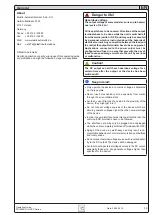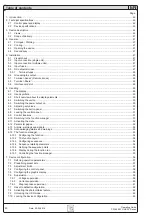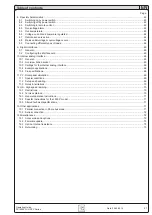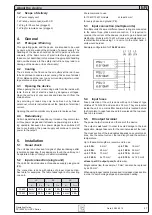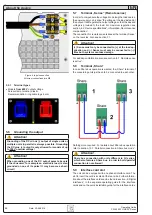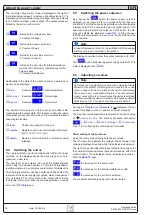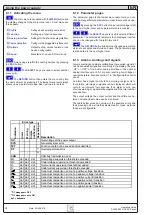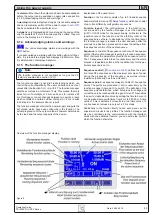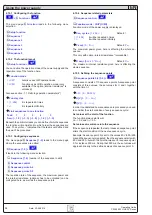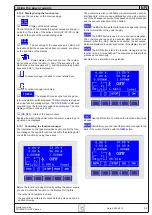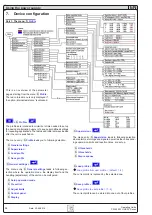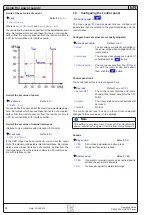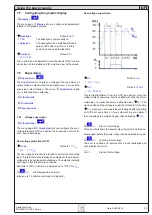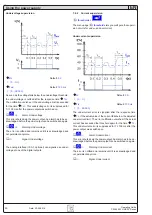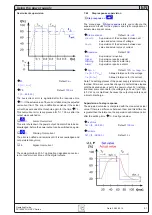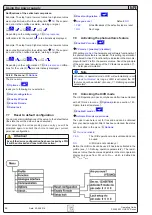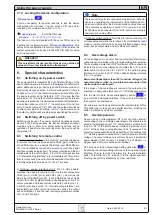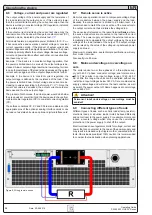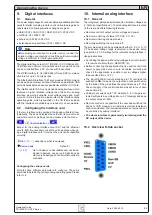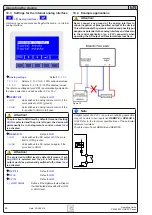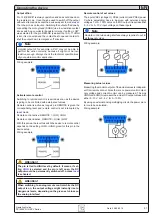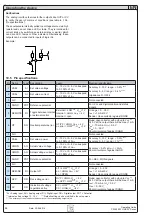
53
Operating Guide
PSI 8000 3U HS PV Series
EN
Date: 20-05-2016
Using the power supply
An
alarm
will shut down the output and has to be acknowledged
before the output can be switched on again (also see section
„6.14. Acknowledging alarms and warnings“).
A
warning
remains in display as long as it is not acknowledged
and can temporarily switch off the power output, if „
auto ON
“
has been activated for a particular error.
A
signal
is only displayed and only as long as the cause of the
error is persistent. If more than one signal is notified, they will
cycle in the display in a 2 s interval.
6.14 Acknowledging alarms and warnings
You can acknowledge alarms and warnings with the
QUIT
button.
If you acknowledge a warning with this button while it still per-
sists, it is turned into a signal and displayed furthermore. Else
it is deleted and not displayed anymore .
6.15 The function manager
Note
The function manager is not available as long as the PV
feature is enabled (see section 14.3)!
The function manager is used to create functions which can
control the unit automatically. The user can build curves of set
values after the function f(U, I,
∆
t) with it. The function manager
sets the set values in an interval of 2 ms. This means, that only
times for
∆
t of a multiple of 2 ms can be set, for instance 50
ms. If voltage or current changes between two points, a ramp
which consists of a certain number of steps (
∆
t : 2 ms, results
in 25 steps for the example above) is built.
The function manager controls the power supply and puts the
set values, which have been configured in the function. The
actual progression of the output values is however determined
by the load and the output capacity of the device.
Overview of the function manager display:
Figure 8
Explanation of the used terms:
Function
= the function consists of up to 5 linked sequence
headers (starts in menu at
Setup function
), which can consist
of up to five differently configurable sequences.
Function layout
= the configurations in the function lay-
out are used by the function manager to set the operation
(U/I/P or U/I/R) mode for the power supply. Furthermore, the
repetition rate of the function and the arbitrary order of the
sequences are set here. In dependency of the function layout
the function manager processes the next sequence after the
previous one has been processed and uses the settings from
the sequence control of the next sequence.
Sequence
= consists of the sequence control and 10 sequence
points. If the function manager is going to process a sequence,
it first of all sets the parameters given in the sequence control.
The 10 sequence points are set consecutively and the whole
process is repeated as often as the repetition rate for the par-
ticular sequence is set to.
Sequence control
(
Sequence control
) = defines the repeti
-
tion rate of the sequence and the maximum set value of power
during the processing of the sequence, as well as internal
resistance (optionally, has to be unlocked).
Sequence point
= a sequence always consists of 10 sequence
points. The points are processed (=set) consecutively by the
function manager from point 0 to point 9. The definition of the
sequence point determines, which set values for voltage and
current have to be reached after the given time
∆
t. This enables
the user to create step functions by setting the time to 0 ms or 2
ms, as well as ramps with times from 4 ms to 99 h99 m. A time
value of 0 ms is settable, but results in a real time value of 2
ms, because set values are only set in 2 ms steps.
Additionally to the function itself you can set up and use the
supervision circuits in the profiles. The function manager can
also be controlled via the communication with the interface
cards with one additional feature: you can set a stop point at
which the function shall stop.

